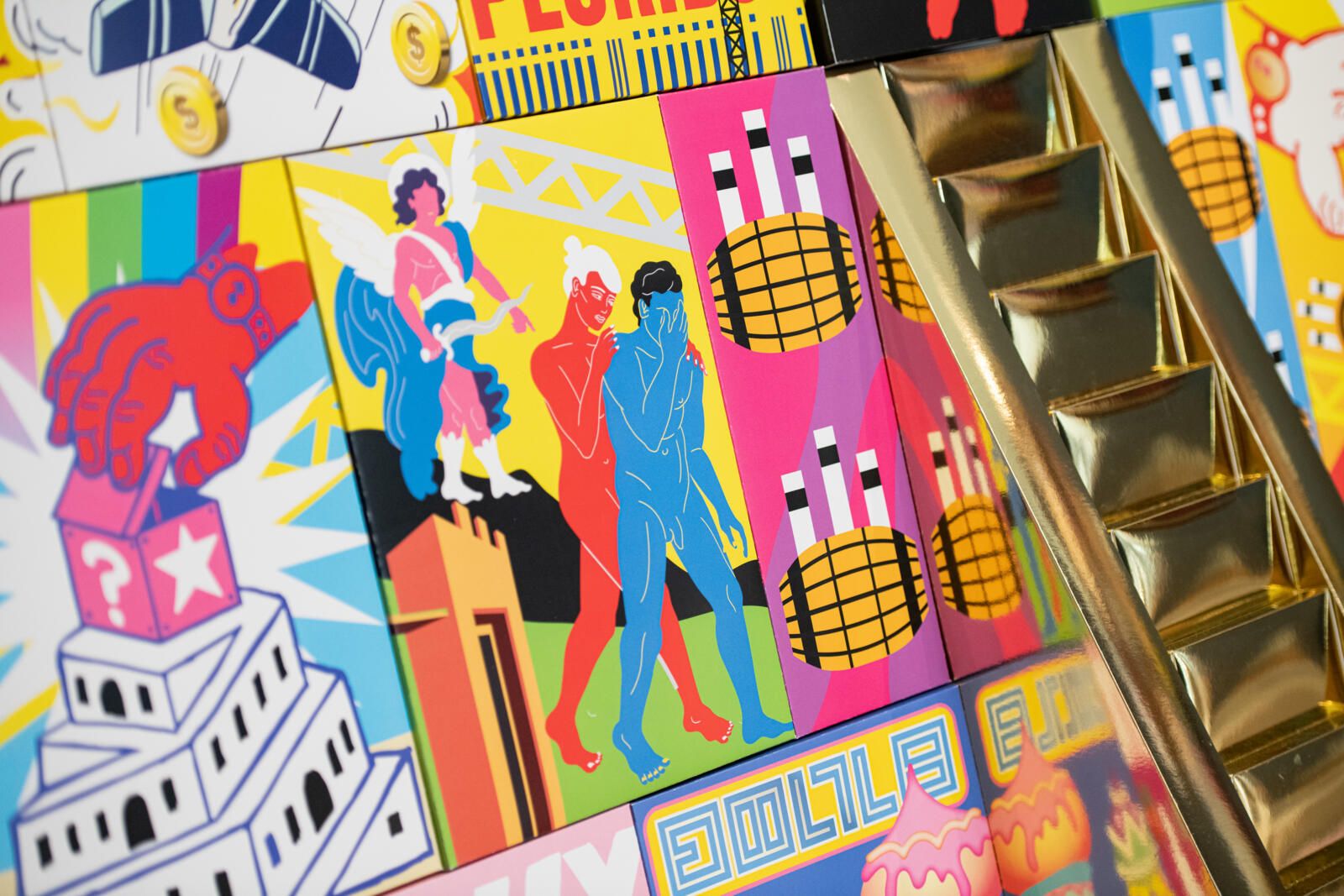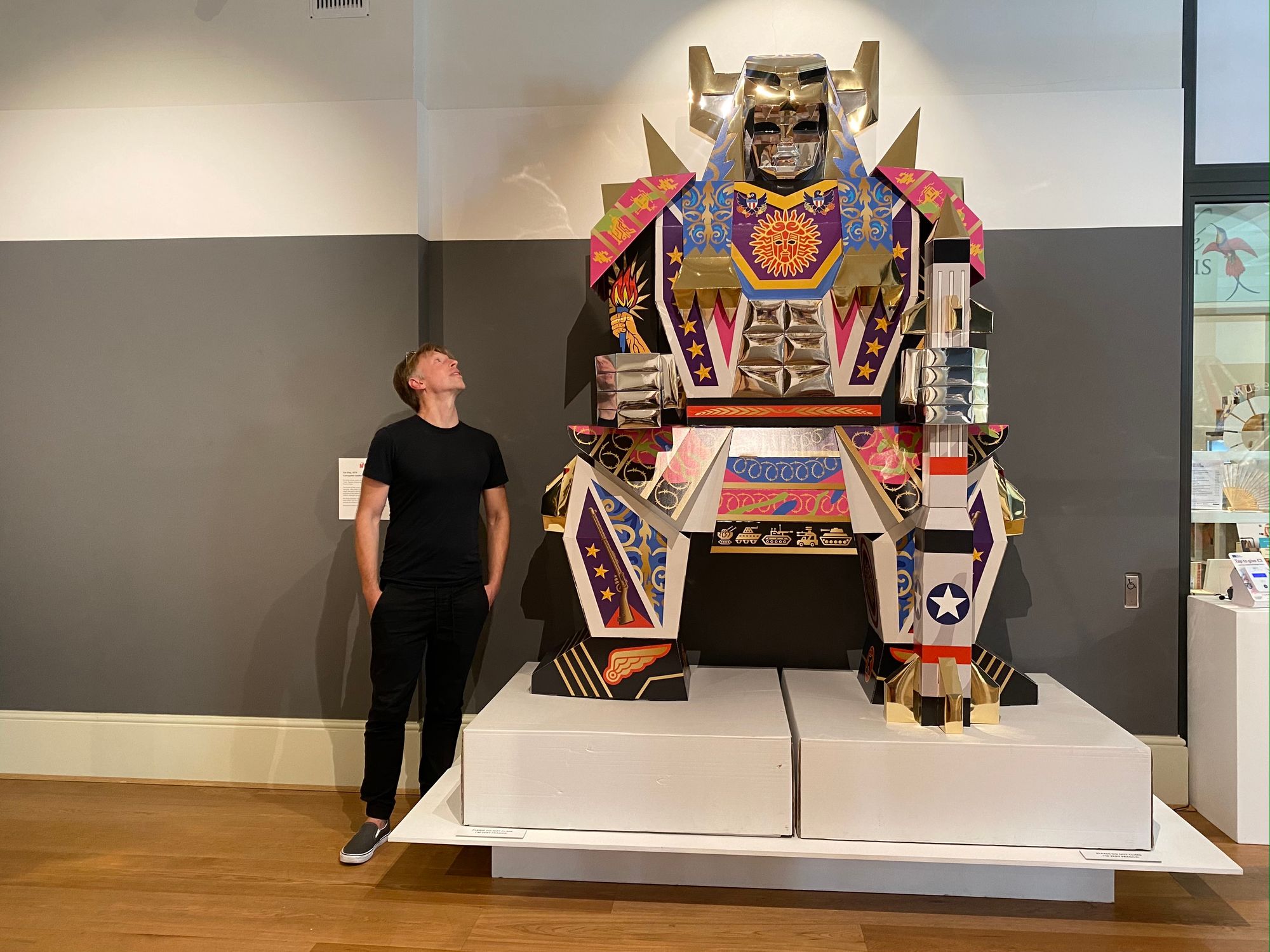In this piece, we continue our conversation with Ian Kirkpatrick, the artist behind the incredible sculptural works of Mythomania, now on at the Willis Museum and Sainsbury Gallery.
Part two: style and construction
Is there a reason behind your bold use of colour? Has this always been a signature style of yours?
Interestingly, my artwork initially had almost no colour at all! My first pieces were suggestive of ancient Greek Vases, and were similarly hand-painted in red and black tones. It wasn’t until I started making art using digitally printed cardboard that I added other colours. I wanted to reflect the language of packaging design, which is typically very colourful and graphical. It’s also quite easy to add colour digitally, and to experiment with it – so now I spend a lot of time playing with the tones until I achieve the right colour scheme for a given piece.

When you decided to translate your iconographic, imagery and symbolism onto the surface of sculptural forms, this was a big leap in your artistic practice. How did you teach yourself 3D construction and what inspired the scale of them?
Although I technically got my Fine Art degree as a sculptor, I tend to “think” more as a 2D artist. That’s possibly why I actually design all of my sculptures as 2D objects first. Rather than use 3D software, I basically design the pieces as 2D unfolded “nets”. My first sculptures were quite simple & borrow heavily from familiar packaging design shapes – such as milk cartons. Over time, I’ve developed more intricate ways of building the structures – and also they’ve increased in size. I think the pieces are more impactful at large scale; they feel like ancient stone monuments, even though they are only hollow forms made of corrugated cardboard or artificial leather. I like that juxtaposition between their massive size, and the underlying modesty and fragility of their building materials. I feel it’s reflective of the way many things we see in modern culture are built to look quite spectacular but are actually just decorative facades or carefully crafted illusions.

What advice would you give to give to young artists who feel inspired by your work?
I would say thank you! And I would encourage them to be bold and take chances in their own work. Personally, it took me a long time to find my own “voice” as an artist and develop the kind of work I’m making now. I think a lot of young artists feel they have to immediately have their own “style” with fully formed ideas – but I don’t think this is a realistic expectation to put on themselves. It’s better to just experiment with ideas and learn the skills necessary for creating the work they are interested in (whether it be painting, sculpture, computer art, graffiti, etc.). An artist’s voice emerges slowly, through trial and error. So, my main advice is to have faith in yourself and understand that art is a long journey – but it can be very rewarding. I definitely wouldn’t want to have any other kind of career!
Hear more from Ian in the video below:
Mythomania is at the Willis Museum and Sainsbury Gallery in Basingstoke until 16 October. Admission is free. Find out more on the Hampshire Cultural Trust website.



